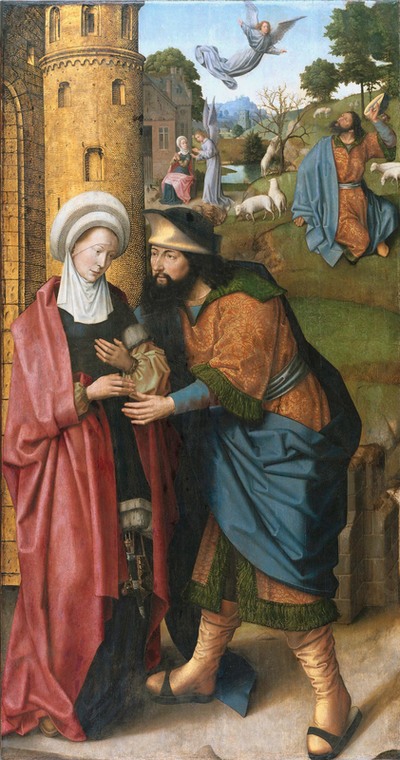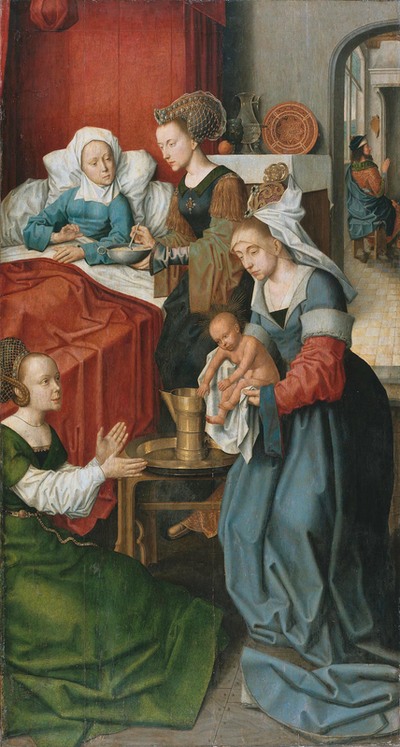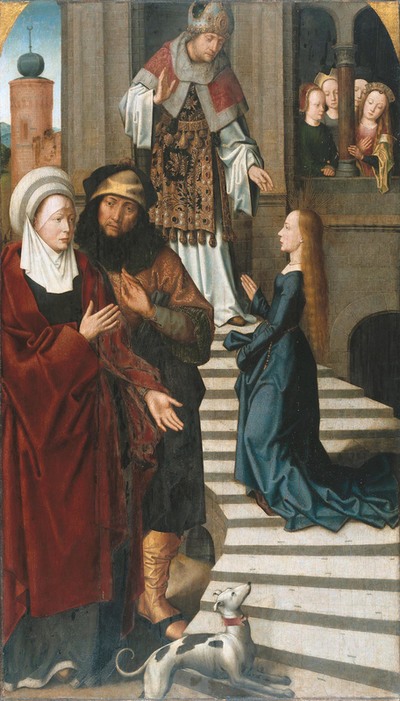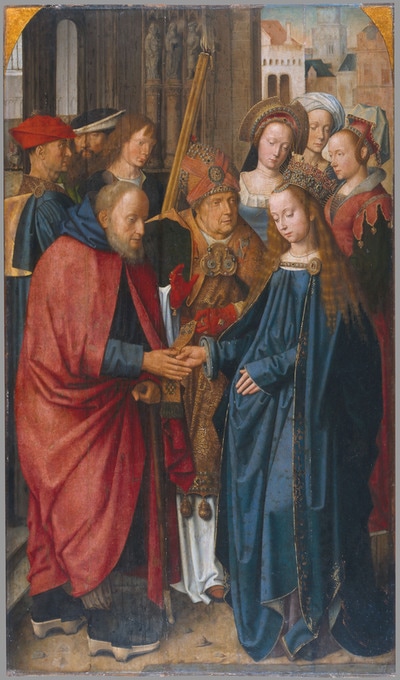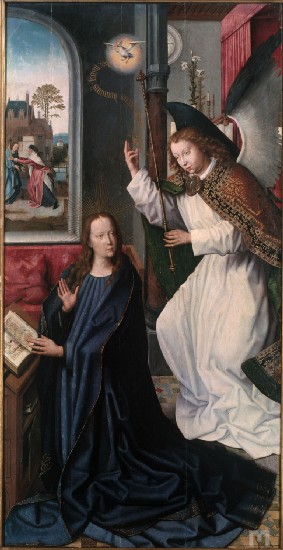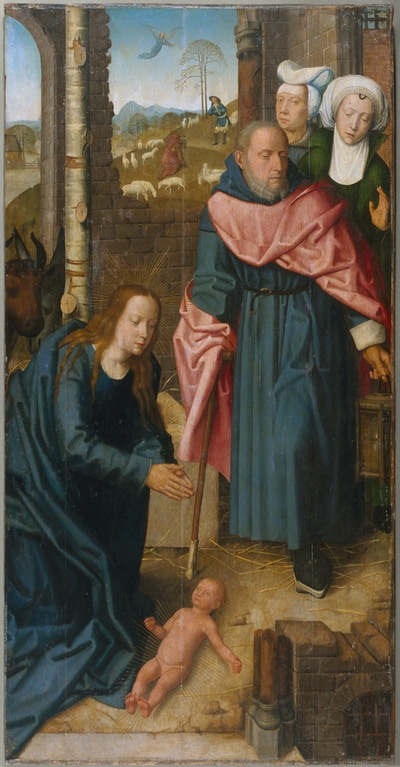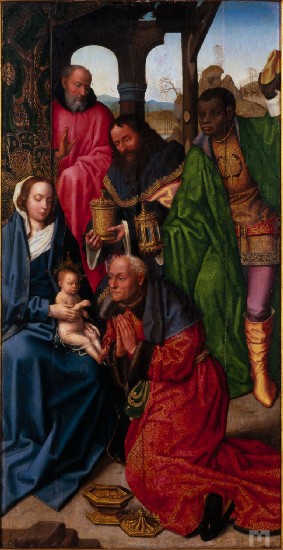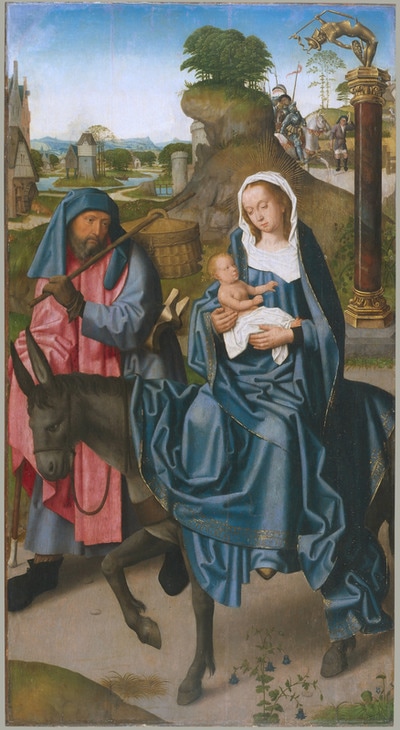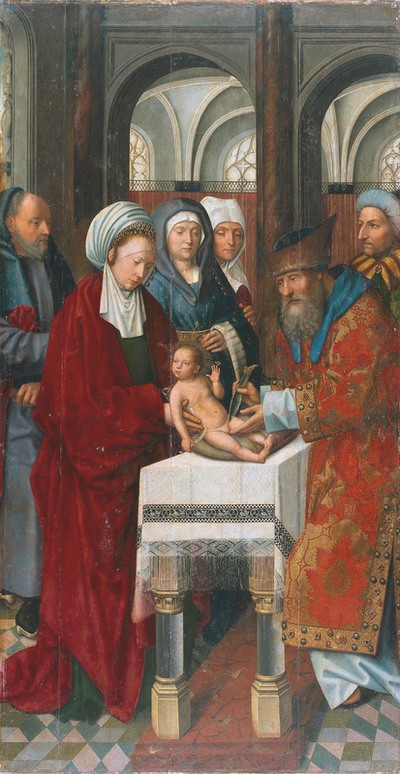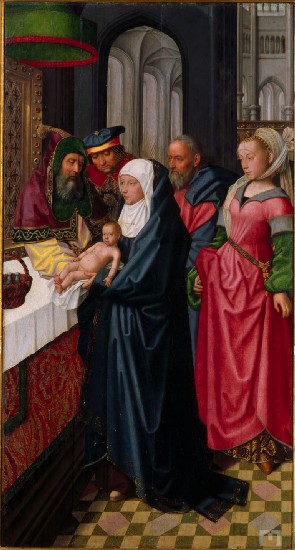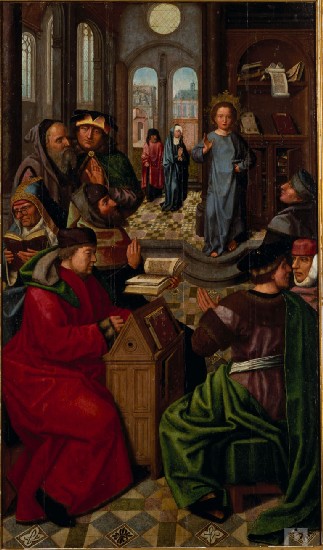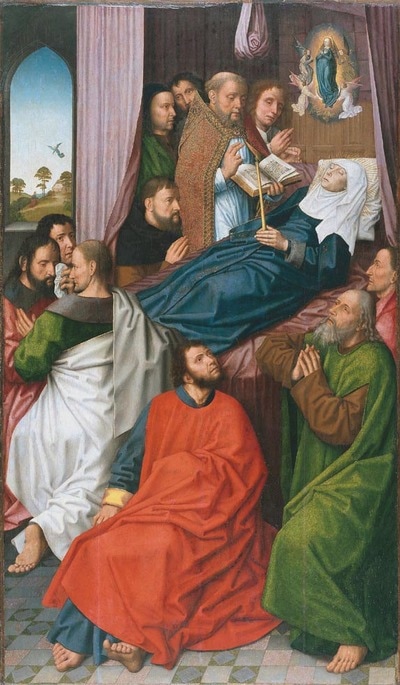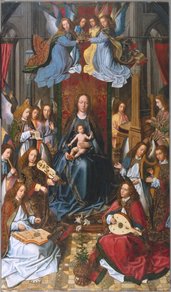A group of 17 paintings made on oak panels, from an original polyptych of the altarpiece of the Cathedral of Évora, Portugal.
Date: The polyptych is dated from early 16th century.
Author: unknown, but probably an ecletic group of Flemish painting masters.
General Composition:
13 vertical rectangular panels - Scenes of the Life of the Virgin;
6 Predellas - Scenes of the Passion of Jesus.
6 Predellas - Scenes of the Passion of Jesus.
Composition of the Scenes of the Life of the Virgin:
Identification of the scenes:
1 - Saint Anne and Saint Joaquim;
2 - Birth of the Virgin;
3 - Presentation of the Virgin in the Temple;
4 - Wedding of the Virgin;
5 - Annunciation;
6 - Manger;
7 - Adoration of the Kings;
8 - Escape to Egypt;
9 - Circumcision of Jesus;
10 - Presentation of the Child in the Temple;
11 - The Child Among the Doctors;
12 - Death of the Virgin;
13 Coronation of the Virgin.
Dimensions of each panel: Aprox. 190 cm height x 110 cm width x 35 mm thick; Panel 13 is exceptionally larger, with 269 cm x 157 cm x 28 mm.
Composition of the Scenes of the Passion of Jesus:
1 - The Last Supper;
2 - The Prison of Christ;
3 - Christ and Pilates;
4 - Descent from the Cross;
5 - Resurrection of Christ.
6 - Ascension of Christ.
Dimensions of each panel: Aprox. 77 cm height x 88 cm width x 35 mm thick.
Next powerpoint shows each panel front side before treatment, followed by a diagram made from the radiography showing the construction technique, enhancing the floating wooden keys in the butt joins (in orange), other smaller wooden keys out in an older restoration treatment ( in green) and the butterfly keys adapted from the back side of the panels ( in outline).
link to video about the temporary exhibition of the set of paintings in the MNAA in Lisbon:
http://aeiou.expresso.pt/gen.pl?p=stories&op=view&fokey=ex.stories/251357
Small video showing the procedure to replace old "butterfly keys" by new wood pieces with the grain in the same direction of the painted boards.
|
Final display of the set in the Museum of Évora, Porugal.
